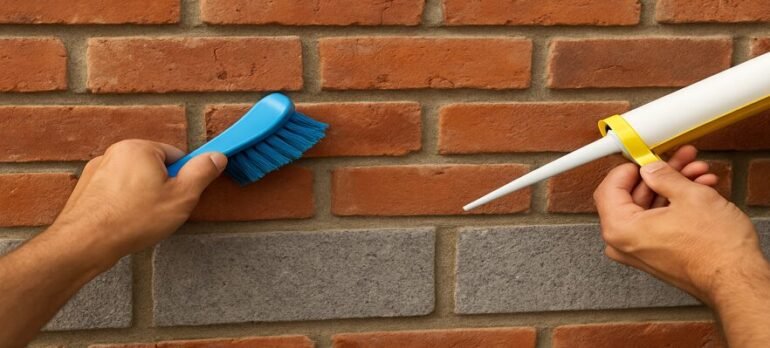
Brick and block cladding give your home a strong and stylish finish. But like any part of your property, it needs regular care to stay in good shape. In this guide, we’ll walk you through simple ways to maintain your cladding, so it stays clean, strong, and weather-resistant for years to come.
Why You Should Maintain Your Brick and Block Cladding
Keeping your cladding in good condition helps prevent common problems like cracking, mould, and leaks. It also improves the overall appearance of your home. When looked after properly, brick and block cladding can extend the life of your exterior walls and reduce the need for costly repairs later. Homes with well-maintained cladding can last up to 40% longer before needing major work.
Cleaning Your Brick and Block Cladding
Over time, dust, moss, and algae can build up on the surface. This not only makes your cladding look dull but can also cause damage if left untreated. A gentle clean with water and a soft brush is often enough. For larger areas or stubborn grime, you might want to consider professional water blasting services. Regular cleaning can extend the lifespan of your cladding by up to 10 years.
How to Spot Damage Early
It’s a good habit to check your cladding a few times a year. Look for:
- Small cracks or chips
- Loose blocks or gaps in the mortar
- Signs of water stains or mould
Catching these signs early can help you fix issues before they get worse. If left too long, even small problems can lead to bigger structural repairs.
Fixing Cracks and Other Common Problems
Minor cracks or holes can often be filled with sealant. But for larger issues, like water damage or crumbling sections, it’s best to call a professional. Some repairs may involve resealing or replacing a portion of the cladding. If you’re unsure where to start, our brick and block cladding services can help restore your walls safely and properly.
Don’t Forget the Mortar
The mortar between bricks or blocks is just as important as the cladding itself. Over time, mortar can weaken, allowing moisture to get inside. Repointing — where damaged mortar is removed and replaced — helps keep the structure stable and sealed. It’s a key step in maintaining the strength and weather resistance of your cladding.
Why Sealing Matters
Moisture is one of the biggest threats to cladding. Applying a waterproof sealant can protect against rain, mildew, and cracking. Sealing also helps your walls look newer for longer and is especially useful if your cladding is older or exposed to a lot of weather. If you’re planning a full exterior refresh, it might be a good time to also think about roof maintenance services to ensure the top of your home is also sealed and protected.
Think of It Like Skin
Your cladding is like your home’s skin. Just as your skin protects your body, your cladding protects your house from wind, rain, and sun. If you care for it regularly — by cleaning, inspecting, and sealing — it will stay strong and last longer. Ignore it, and it can wear out and fail over time.
When to Call a Professional
While basic maintenance can be done yourself, some jobs are better left to experts. A qualified professional can check for hidden issues, carry out repairs safely, and offer advice specific to your cladding type. This is especially helpful if you’re already doing other renovations like weatherboard cladding or roofing updates, as everything works best when done together.
Final Thoughts
With regular care, brick and block cladding can stay durable and attractive for many years. A bit of time spent on cleaning, checking, and repairing now can save you a lot of money and stress in the future. For expert help with maintenance or repairs, contact Quik Solutions – we’re here to keep your property in top shape.


